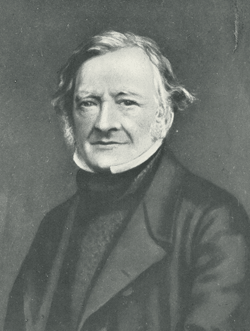William Mulready, Subject Painter
(b. 1786, d. 1863)
Subject Painter
From A Dictionary of Irish Artists 1913

William Mulready, R.A. Picture; in the National Gallery of Ireland.
Born in Ireland he left it while he was still a child and never returned; his life was passed in England, and his artistic career need not therefore be fully detailed in this work. He was a native of Ennis, where he was born on 1st April, 1786. When he was about 18 months old his family removed to Dublin, where his father, a leather-breeches maker, carried on his trade for about four years, and then went to London, where he set up in business in old Compton Street, Soho. From his earliest years William Mulready displayed a precocious talent for drawing. His parents, who were Roman Catholics, gave him the best education which their poor condition could afford, at first in a Wesleyan school and afterwards in a Roman Catholic school in Castle Street, Long Acre. His first entry into the art world was as a model to John Graham, the historical painter; and he afterwards placed himself as a pupil with Baynes, a drawing master. He attracted the notice of Banks the sculptor, who took him into his studio and set him to work in drawing from his sculpture, and in November, 1800, he gained admission to the schools of the Royal Academy. At the age of 16 he gained the large silver palette of the Society of Arts for his skill in painting, and about this time he made the acquaintance of John Varley, and assisted him as a teacher. During these early years the young artist had managed to support himself by teaching drawing and illustrating a number of children's books which were published between 1807 and 1809. He said himself that he "tried his hand at everything from a miniature to a panorama." In 1804, when he was living at 15 Broad Street, Golden Square, he made his first appearance at the Royal Academy with three pictures, views in Yorkshire, and showed landscapes and views during the next three years. His first figure subject, "Old Caspar, from Southey's Battle of Blenheim," was in the Academy in 1807, and his first important work, "The Carpenter's Shop," was exhibited in the British Institution in 1809.
For the next few years he continued to exhibit figure subjects modelled in the style of the Dutch masters, but as he went on and gained confidence in his own powers, he developed a more original style and one peculiar to himself. In November, 1815, he was elected an Associate of the Royal Academy, and in February, 1816, a Member, and in the same year exhibited his picture of "The Fight Interrupted," which he also sent over in 1817 to the Royal Hibernian Academy. He was an exhibitor almost every year down to 1862, in which year he showed his last work, "The Toy-Seller," now in the National Gallery of Ireland. During his whole career Mulready was a hard worker; neither age nor ill-health diminished his ardour in his profession, and from the time he became a student until within two days of his death he was a diligent worker in the Life School in the Academy. He said himself: "I have, from the first moment I became a visitor in the Life School, drawn there as if I were drawing for the prize." He lived a secluded and solitary life especially during his latter days. He died in his house in Linden Grove, Bayswater, on 7th July, 1863, and was buried in Kensal Green cemetery, where a monument to his memory was erected by his friends.
Mulready married early in life, when about 18, Elizabeth, daughter of John Varley, the water-colour painter; but the marriage did not turn out happily, and after four years the young couple separated. There were four children, sons, of the marriage; John, Paul, Michael (died in 1889 aged 81), and William, who were all artists and exhibited in the Royal Academy.
Mulready was a careful worker, his pictures are minutely finished and well drawn, his colour harmonious though garish and often rather hot and foxy, and in his latter years unpleasantly purplish. He particularly excelled in the painting of textures, as may be seen in his "Choosing the Wedding Gown." Most of his best pictures are in the Victoria and Albert Museum, which also possesses a large number of his drawings and life-studies. Among his best works are "The Sonnet" and "Choosing the Wedding Gown," both in the Victoria and Albert Museum, where are also his "Fight Interrupted," "The Convalescent," "Giving a Bite," "The Butt" and others. "The Wolf and the Lamb" is in the Royal collection, and "The Young Brother," "The Bathers" and "The Toy-Seller" are in the National Gallery of Ireland, where is also a small portrait of the artist's father.
